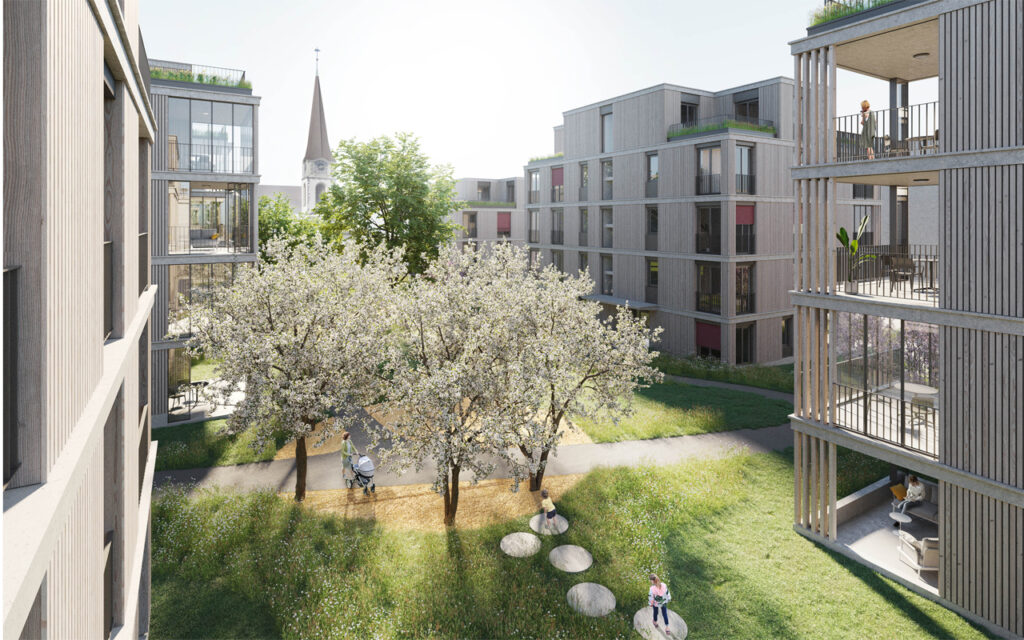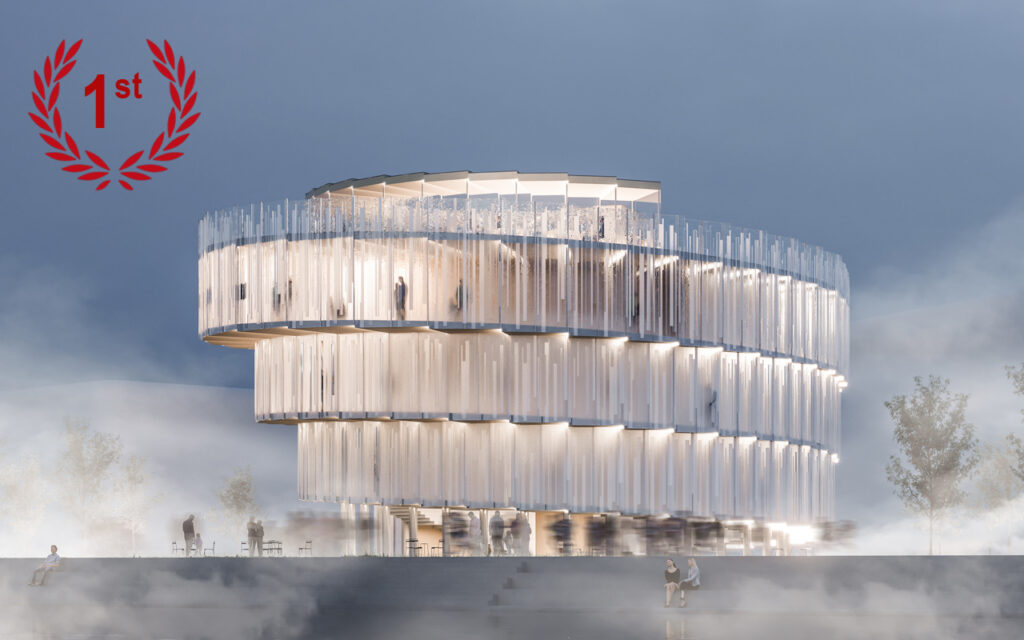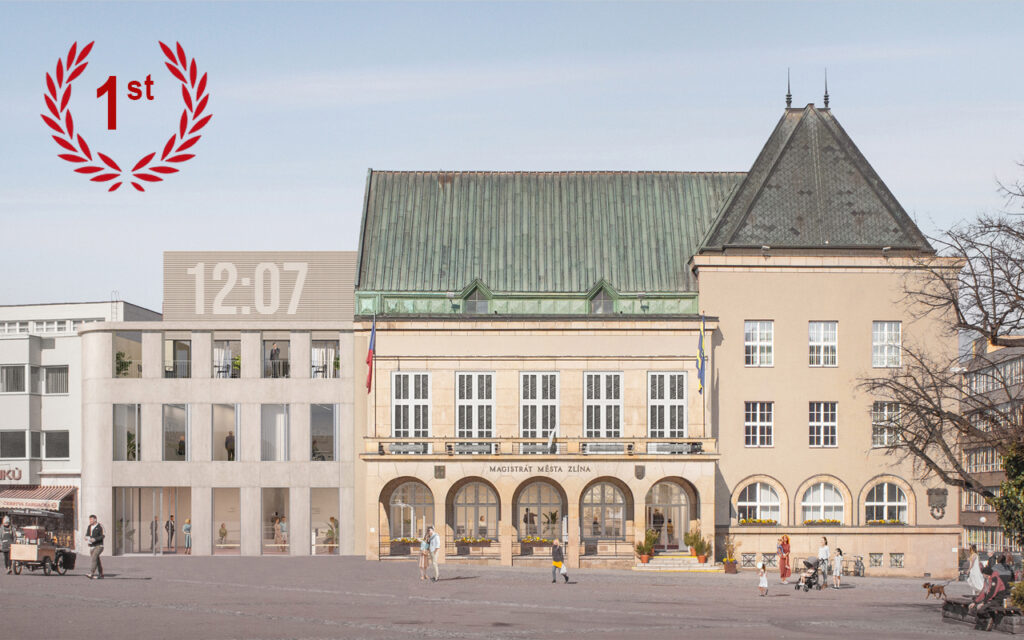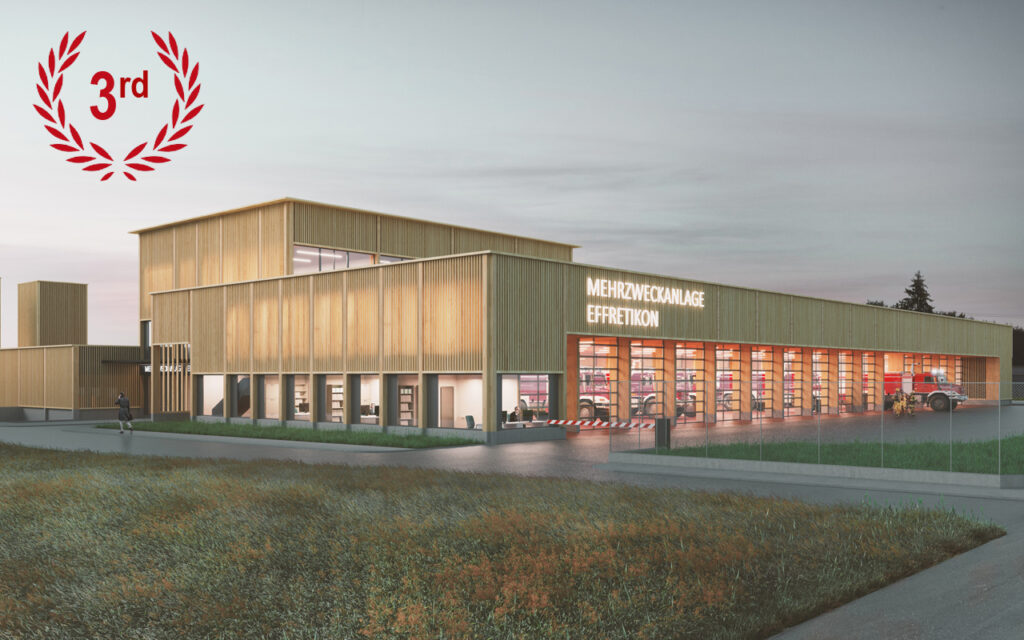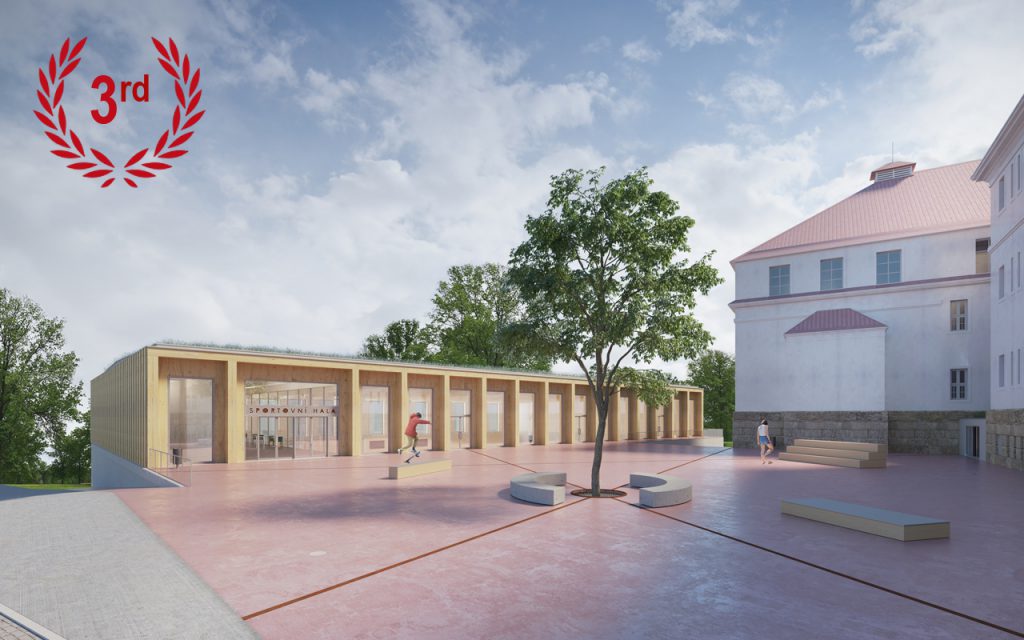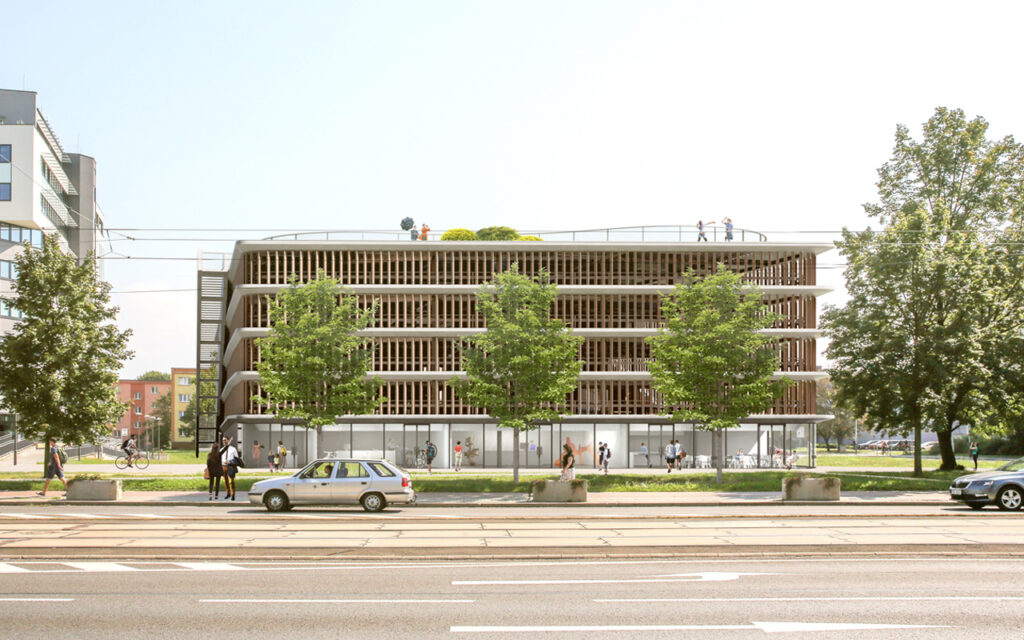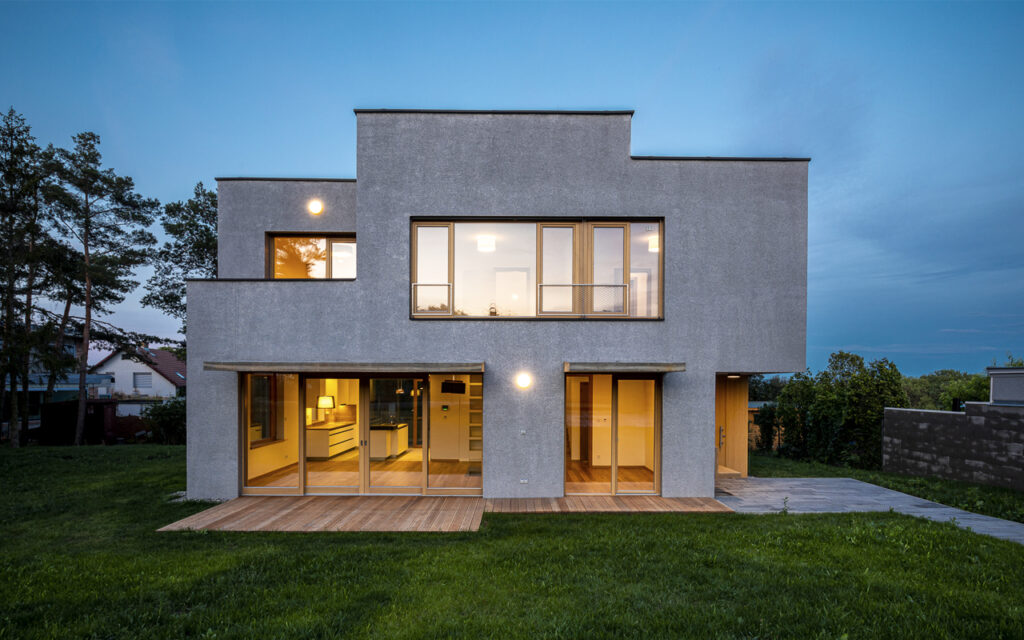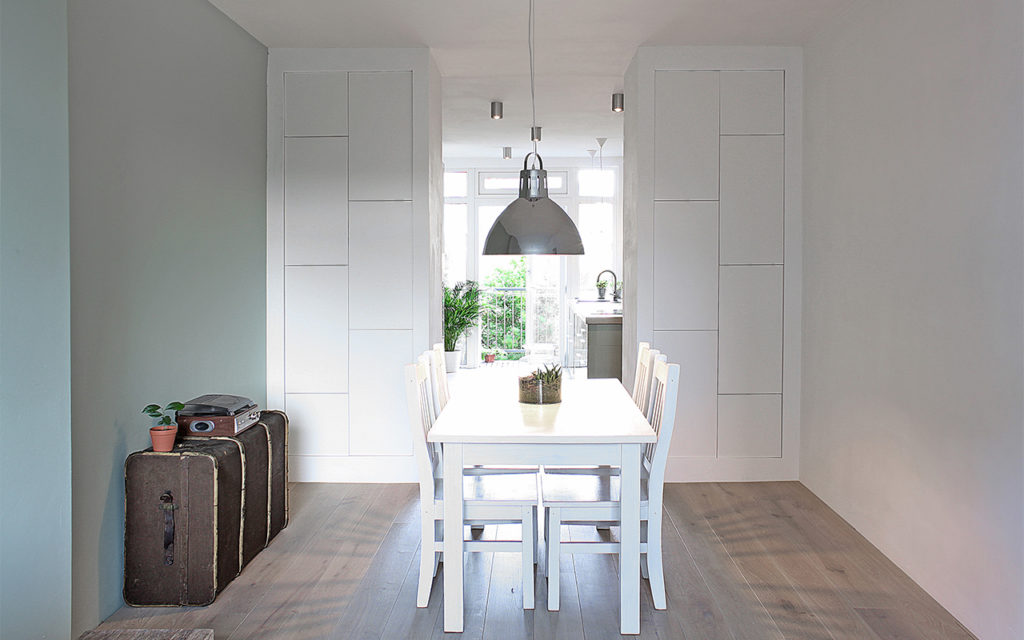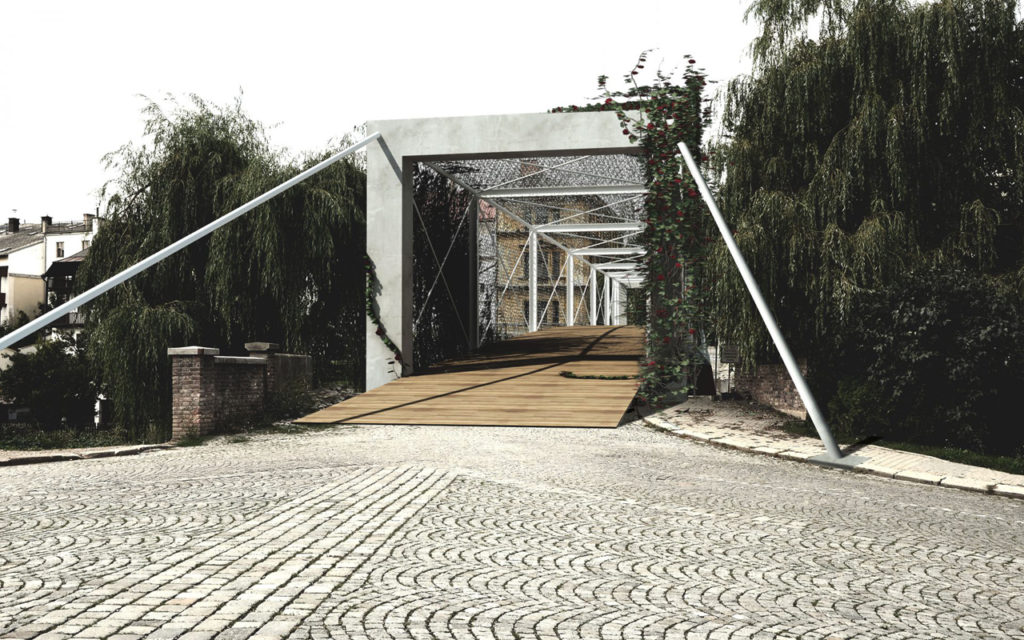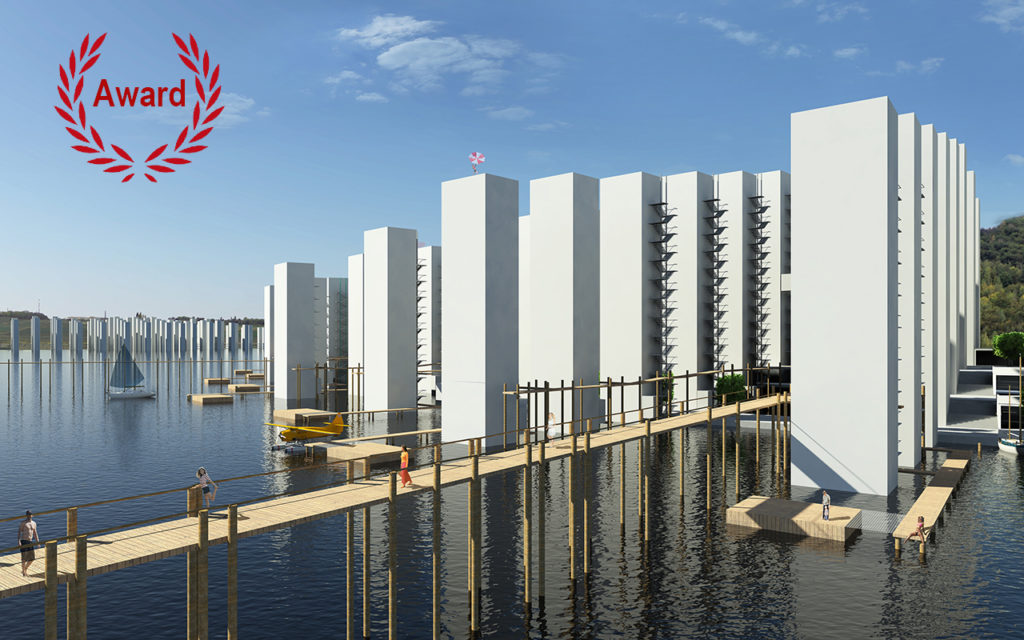Kay e Sante nan Ayiti
Competition proposal, social housing
Haiti, 2011
Ing. arch. Michal Gabaš, Ing. arch. Tomáš Beránek, MgA. Martin Gabaš
The main goal of the project is to come up with a housing design that will provide healthy environment for its inhabitants resulting into reduction of transmission of various diseases such as Tuberculosis. The second main goal of our design is the ability to survive lethal natural disasters, such as hurricanes, floods, earthquakes and tornados.
Concept:
The main idea of the project comes out of the way the design approaches all these challenges. The concept of the project is a house built inside a protective shell. The shell is represented by a spatial structural frame, which is based on the shape of a truss girder. This shell protects the vulnerable interior of the house against the aggressive outer environment that can perform in many different ways. The structural shell protects people living in the house against extreme heat, intense rainfalls, strong winds, floods that result from hurricanes and damaging earthquakes.
The second advantage that results from this conceptual approach lies in the flexibility of the interior spaces. The structure placed outside the building enables the layout of the house to be as adapted to the needs of its inhabitants as necessary. By using the same general structural composition the interiors of each housing unit can vary rapidly and in that way reflect the size and amount of members of each community living there.
Site layout:
The five houses are aligned along the existing road on the western side of the site facing the south-east with the distances of 8 meters between them. The position and orientation of each of the houses allows usage of the eastern part of the site to grow vegetables and fruits in individual and communal gardens.
Layout:
By having the option to form the layout of the interior freely, it is easily possible to achieve the optimal setting for different situations. In our model example, considering the task to design a unit for 3-4 family members with 3 bedrooms and common living spaces, we came up with the most suitable layout that should provide privacy for each of the inhabitants as well as enable isolation in case of any illness. This option of isolation is based on a precise division of the interior. This particular division also reduces the transmission of those diseases.
The concept of the interior layout is based on a model of an atrium house. The ground plan is a simple square with the side of 10,6 meters. The square is placed on the site with its diagonal axis in the south-north, east-west direction.
The main entrance leads into an inner atrium which serves as the main communication space. From there all the other rooms are accessible. Together with the function of the main communication space the atrium is also designed to perform as an extension of the living room and also as the “lakou”, the so called courtyard, where the inhabitants grow plants, such as banana tree.
All of the main four living spaces – the three bedrooms and the living room with the kitchen are placed around the atrium in the corners of the building facing opposite directions and providing privacy for its inhabitants.
Another important characteristic of the layout is the division between the bedrooms and living room. The other spaces – bathrooms, entrance corridor are placed between them and in this way they perform as a natural barrier that should reduce the transmission of diseases among the inhabitants of the house in the case one of them gets infected.
The interior of the building is surrounded by an extended porch which can be entered from each of the rooms.
The main living room with the kitchen is facing east. The bedrooms are facing south, west and north, with two bathrooms and entrance hall placed between them.
The main entrance to each of the objects is placed on the north-western facade and it can be accessed by using the existing road leading along the western border of the site.
Structure, foundations:
The structure of the house is conceived as a spatial truss girder that is able to carry the excessive load, approaching the house from different directions. These directions result from the extreme local conditions.
The structural shell is made of four main parts – the foundation system, the bottom structural frame, the supporting vertical frame and the roof frame.
The foundation system is based on a grid of stone-concrete footings with the dimensions of 800 by 800 mm and the height of 1200 mm. These footings are placed into a gravel bed. The grid results from the important joint-points of the bottom structural frame.
The bottom structural frame is connected in its major joint-points to the foundation system by massive steel rectifying bolts. These bolts connect the whole building to the ground and allow the correction of the distance inclinations from the ground level. The bottom frame is made of wooden trusses of the section of 140 by 140 mm that create a diagonal grid with inner and outer rectangular rings. The layout of the diagonal grid results from the connections with the foundations and with the supporting vertical frame.
The supporting vertical frame is built as an inclined truss girder. Each of the four sides of the house represents one of these trusses. This particular layout allows the structure to survive the effects of spatial forces resulting from extreme wind (hurricane) and earthquake. The inner ring of the structure of the spatial frame is supported by four pillars. These wooden columns are inclined in the opposite direction than the side girders.
The roof frame has the densest grid from all of the structural parts. It copies the shape of the roof, which is based on two similar lifted triangles. It is connected with the lower parts of the structure through the joint-points. The roof frame is made out of four diagonal beams leading from the corners of the outer structural ring to the corners of the inner structural ring. The spars that carry the roofing are spanned perpendicularly between the sides of the outer and inner structural rings of the roof frame.
As the main material for the structural shell the design proposes sawn wood – beams of the section of 140 by 140 mm. The joints between the beams are made of galvanised steel connecting elements. The spars carrying the roofing are made of sawn wood of smaller section – 89 by 140 mm. The steel rectifying bolts connecting the whole wooden frame unit to the foundation system are made of galvanised steel.
The foundation footings are made of the mix of concrete and stone with the necessary steel reinforcement.
Inner house, materials:
The inner built-in house is based on the classic two by four wall system. With the exterior walls finished with wooden boards with necessary thermal insulation inside the wall. The finishing of the interior walls is made of wooden board materials, wooden-implant plates and drywall where necessary (kitchen – protection against fire hazard, bathrooms – protection against humidity).
The inner house is fixed to the beams of the bottom structural frame and the roof frame.
The walls of the house have the wall thickness of 150 mm. The roof of the inner house is made of wood as well. Its structure is independent on the outer structural shell.
Exterior, facades, roof, materials:
The exterior appearance of the houses is influenced by the articulation of the structural shell. The windows of the inner house are designed to appeal as homogenous with the exterior wall as possible. The rhythm of the windows tries to bring certain regularity, which does not disturb the play of the structural shell.
The finishing of all the exterior wooden surfaces of the house is covered with a transparent paint that on one hand protects the wood against humidity and aggressive environment in general and on the other hand brings the dominance of the natural texture of the wooden surfaces.
The entrance, north – west façade is designed as a solid blind wall. There is only a small window leading into one of the two bathrooms of the house and the main entrance door into the object.
The north – east façade is articulated by windows leading into one of the bedrooms, into kitchen with dining space and into side of living room. The window openings, of the dimensions of 800 by 2100 mm each, regularly divide the north – east façade. There is only one nuance in the rhythm of the façade. This nuance is represented by the half sized, of the width of 400 mm, thin fenestra leading into the north – eastern bedroom.
The main south – east façade connects the living spaces of the house with the garden and exterior terrace. It enables complete opening of the living room and together with the movable partition, which is placed on the inner side of the living room it allows fluent connection of the atrium and living room with the garden.
The four openings placed on the south – east façade are matched together to create one large window divided into four parts.
The south – west façade is divided by four windows leading into the two bedrooms and one bathroom window.
The roof is made of sheets of titanium-zinc metal, with the thermal insulation under the roofing between the spars.
Windows:
All the windows of the building perform as doors leading on the ring porch around the house. The fill of the window frames is designed as horizontally rotating shutters that can regulate the amount of light and air coming inside the building.
Well and Water regime:
The water regime on the site stands as one of the most difficult tasks to solve. As the closest source of potable water is a river in the distance of 1,5 km from the site. The project has to come up with alternatives directly at the site.
In the northern part of the site, next to the main entrance to the colony the design proposes a well that is going be dug during the building phase of the project. The well with a shed above will serve as the main source of drinkable water.
Since May the next six months that are characteristic for tropical rainfalls allow to harvest significant amount of water from the roofs of the objects. This water is mechanically cleaned by various filters placed inside the water tanks and further used in toilets, kitchen and bathrooms.
Each of these spaces is equipped with approximately 1200 l water tank. There is no need to use any pump systems as the water is driven from the roof into the tanks only by gravity.
During the dry period of year the inhabitants are fully dependent on the well and on the water supplies saved inside the tanks during the rainy period of year.
Sewage waste:
In the southern, lowest part of the site there is a cesspool built for the use of the colony. The cesspool is used for collecting the sewage waste from the five prototype houses. The cleaning process of the waste is achieved by chemical processes inside the cesspool.
Energy source:
The wind turbine and the diesel generator unit, which are used as the main source of electric energy for the colony, are located in the southern part of the site. During windy days the turbine works as the primary source of electric energy. Over certain periods of year, when the wind conditions are not sufficient enough to produce electricity for the whole colony, the diesel generator is used as the primary source of electricity.
The choice of wind turbine as the primary energy source is based on the environmentally friendly aspects of this particular technology. The energy source (wind) is inexhaustible energy source. Also the fact that costs of this particular technology are much lower than the costs of its alternatives on the field of “green” energies (photovoltaic panels), supported the choice of wind turbine generator.
Air circulation and Sun regime:
One of the main goals of the design is to protect the inhabitants against extreme temperature averaging annually more than 25°C.
The protective effect is achieved by using the extended roof, which casts shade on the porch around the building during the hottest parts of day. The doubled roof system that results from the house-in-house concept of the design adds a buffer space between the top and bottom layers of the roof. This buffer space performs as thermo insulation layer and helps to keep the interior cool.
The design further develops this concept using clever, natural air conditioning system. The house itself is lifted above the surface by 15 cm. This act allows the breeze to get under the building and through the spiracles in the floor and in the inner ceiling of each of the house units to ventilate the cumulated hot air out of the interior and lead it through the buffer layer above the rooms out of the building.
Also the shape of the roof is designed to support the ventilation of the inner spaces. The roof has its east corner lifted according to the prevailing local wind directions in order to create a depression around the area of the atrium roof fenestra and in this way support ventilation. The lifted corner of the roof that faces the direction of the prevailing winds also “catches” the largest amount of breeze and by doing so supports the natural ventilation through the windows.
Heath programme, reduction of the tuberculosis transmission:
The optimum environment for the Tuberculosis Bacteria is characterised by conditions similar to Tuberculosis’s natural habitat – human body, more specifically to the parts of human body, where the Bacteria are capable of reproduction. Such environment offer human lungs. The Lungs Tuberculosis represents the most frequent form of this disease.
The natural habitat of the Bacteria is characterised by high humidity, temperature around 37°C and lack of sun light (more specifically without UV radiation).
The Tuberculosis infection represents a typical case of the droplet infection disease. The transmission of the illness happens in most of the cases via the contact with infected person.
The aim of the design is to create as much hostile environment for the Bacteria as possible. Another goal is to decrease the person to person contact with an infected family member within a housing unit to minimum.
The first principle of the health solution is to keep the interior temperature and humidity close to the possible minimum. It’s obvious that the design is unable to create hostile-hot environment for the Bacteria as the temperatures that could possibly kill the Tuberculosis Bacteria begin around 60°C. Since the fact that such temperatures are lethal also for human beings the design has to be focused more on the lower temperatures that are able at least slow down the reproduction of the Tuberculosis Bacteria.
This principle is achieved via effective ventilation through the spiracles in the floor and ceiling level (for more details see chapter Air circulation and Sun regime).
The building is able to open as much as necessary in order to let the healthy Sun light penetrate the interior and destroy the Tuberculosis Bacteria.
The second principle takes into account the importance of interior division. The bathrooms are used as a buffer layer between the bedrooms. This specific layout decreases the potential contact with an infected person to minimum and by doing so it helps to reduce the transmission of the disease among the inhabitants. Also the use of hygienic facilities within the building is more balanced based on the proposed position of bathrooms. Resulting from this, the potential transmission of Tuberculosis is kept to minimum since the inhabitants of each unit (if infected) need minimal movement around the house to meet the basic hygienic needs.
The third health principle is based on the orientation of the rooms. If one person infected, the inhabitants stay isolated from the infected family member in his/her room. All of the rooms and living spaces have windows facing opposite directions and even the contact through exterior stays limited.
Earthquake:
The use of wooden structure reduces the possible damage on the house caused by an earthquake. Wood is a strong material that is able to absorb random spatial forces during even very strong earthquakes. It combines the properties of a low-cost material with outstanding behaviour in extreme conditions. It is also a material of organic origin that could be easily produced and its resources are theoretically unlimited.
The structural concept based on wooden beams connected by steel joints performs as a natural absorber of the vibrations. Also the concrete footing foundations placed in the gravel bed help to silence the shaking of the whole building.
The relative lightness of wood, comparing to concrete and bricks, helps to reduce injuries of the building’s inhabitants in case of any failure of smaller parts of the building during natural disaster.
Also the rectifying steel elements, that connect the wooden framework with the foundation system, help to correct the after-effects of each earthquake.
At the end of the day the design proposes a low-cost, strong, spatially durable structure that is able to survive even really strong earthquakes and stay functional to protect its inhabitants.
Hurricane:
The Hurricane is one of the most common disasters approaching the region of Haiti. The building faces this specific disaster with the concept of complete opening and closing. The same system that provides the natural air circulation within the object can perform in completely opposite way and keep the house hermetically closed. All of the spiracles in the floor and in the ceiling can be closed and in that way block the approaching wind. The same system of opening and closing is used on window shutters.
All of the doors and windows are opening outwards of the interior. This fact helps to avoid violent breaking through the windows by exceptionally strong wind.
The same durable structure that performs well during strong earthquakes brings the ability to survive hurricanes. The whole building acts as one solid piece, which is able to overcome even really strong forces of wind.
Floods:
The floods are the natural knock-on effect of the hurricanes and tropical rainfalls. The building avoids being inundated with water by being lifted above the surface by 15 cm. As the result of this the rainwater from the surroundings that is cumulated around the house during intense rainfalls can escape freely under the building.
All the steel connections and elements, which are exposed to the rainfalls effects, are made of galvanised steel in order to avoid corrosion.
The gravel bed under the building is highly permeable with drainage system at the bottom of it that leads the water away from the house.
All these precautions help to avoid inundations of the houses by water.














